Contemplating Death – an Interview with Somananda
4 April Apr 2016
(The below interview with Somananda was printed in a Slovenian magazine Sensa in April 2016. Original text: Ana Vehovar and Vesna Fister; photos and translation: Jana Braniselj;
English editing: Lori Doyle)
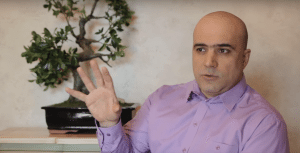
Death is part of our lives and no one can escape from it.
Tibetan Buddhists say that we have two options for dealing with death – either we pay no attention to it or we face its inevitability, reflecting on it and preparing ourselves properly for it.
Tibetan Buddhism explains death as a natural process that is inseparably linked with the concept of reincarnation and karma. For Buddhists death is merely like changing old, worn-out clothes, not an inevitable end of life.
In the Tibetan art of dying the experience of dying is extremely important because the state of the human mind at the moment of death, in addition to karmic forces, influences the characteristics of the soul’s rebirth. We have been talking about the art of dying with a spiritual teacher from Estonia, Somananda, who teaches how to prepare for the biggest transition in life in accordance with the sacred Tibetan traditions in workshops all over the world.
How can we accept death with open arms as something beautiful?
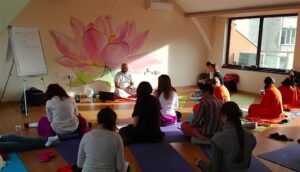
It is necessary to prepare – just like you prepare for an exam on the faculty. Can you accept the exam as something beautiful and harmonious? If you’re not prepared for the exam, you’ll perceive it as very stressful, a nightmare. But if you’re ready, you will go there with a smile, write down your answers, and leave satisfied and happy. The same is true with death, the process of leaving this plane of existence.
When and how did you discover these teachings about the phenomena of death and dying? How do you perceive death?
I

For me, these phenomena were always interesting. I’ve always been curious whether there is simply an end or whether there is anything else beyond this and, if there is something, what it is exactly.
I began studying it in detail when I discovered my spiritual path in 1996. Three years later I went to India, where I became a Yoga teacher and met my spiritual teacher, or guru.
Over the next 10 years, he taught me a great deal of spiritual knowledge – from Yoga and meditation to Tantra – and he gave me teachings about death. I was surprised at how much knowledge exists surrounding this subject, and when I learned it, I also began to teach the workshops my teacher created. I follow his footsteps and teach in the West now.
The perception of death I teach is not mine. It is the conclusion of spiritual perceptions of all major spiritual teachers – from the Tibetan and yogic traditions to the modern psychological studies of some researchers such as Raymond Moody and Dr. Elisabeth Kübler- Ross – as well as researchers of Buddhism, Christianity, Judaism, and other religions. All knowledge together is like a wheel which shows very clearly that the process of death is not as vague and unknown as people normally think.
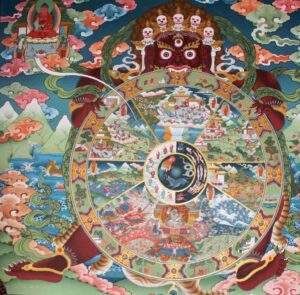
Most people today consider that death is “game over” – the heart stops beating, the breath ends, the deceased is put in a tomb, and everyone says goodbye. Of course they also know that this process is usually accompanied by a lot of pain and suffering.
The great majority still think that all of a sudden everything ends and then there is nothing more. This is a concept dictated by modern science. But the truth is that death is a lot more – it is a part of our spiritual knowledge. Spiritual science and doctrines from all over the world have proved that death is not incomprehensible; rather, it can be understood with some clarity. The Tibetan tradition has developed manuals which explain what should be done before death, while dying, and after death in order to influence the human consciousness.
Because of the attachment to the body the mind creates fear, which always tells us: “Do not think about the end.” The basic principle in all traditions is that after death the consciousness or soul remains, and it goes through certain processes. But since most people adhere to the beliefs of modern science, which says that the physical body is the ultimate and that’s it, people come to the moment of death completely unprepared, and here is where the problems arise and, with them, suffering. Therefore, I organize workshops, which remedy ignorance and provide clear guidelines as to how to prepare yourself and how to help others when they come to this important moment in life.
The state of consciousness at the moment of death, therefore, affects our death?
At the time of death, it is important to have awareness so that we can have an influence on the many phenomena taking place – not so much on the physical level but more on the mental level. If someone is well informed, death can be an extremely beneficial and harmonious spiritual experience for the soul. The essence of the problem is that most people are unaware at the time of death. The same is true for the majority of other moments in our lives – we are not living consciously in any given moment, which is a problem.
Death is a part of life and no one can escape from it. It is definitely something we want to prepare for.
What if we are not prepared for death when the soul realizes that death has come?
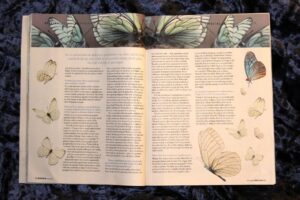
This depends mainly on how death has occurred. For example, if death occurs suddenly due to an accident, a terrorist or violent act, etc., in many such cases the soul does not realize that the moment of death has occurred.
This situation is similar to dreams in which we do not know what is happening. It can be frustrating and take some time to understand, and therein lie the problems that are worth avoiding.
When you are psychologically and spiritually ready for death, you start to appreciate life more, you feel more, and you become aware of everything around you. You develop compassion and you can give support.
Can we prepare also for an unexpected death – an accident, for example?
It is very difficult, but if you have a solid basis of spiritual development you will find yourself in a relatively good state of mind at all times. Even if death catches you unexpectedly, you are somehow always ready for anything. Or better said, if you are evolving spiritually, you carry out a positive impact on your karma and can thus block some adverse life situations.
Why do we lose memory of our true origin and previous lives? How useful are various techniques of regression for our spiritual development?
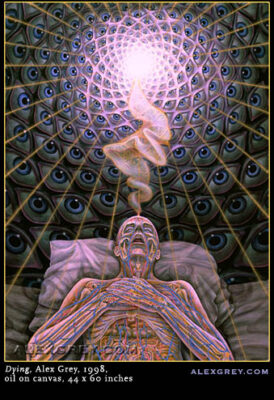
The fact is that most people really do not remember their previous lives.
We live in a time when people think they know a lot, when a great deal of information out there only skims the surface of a wide variety of subjects.
Not only this but you will find a variety of new-age workshops about accessing your past lives and the akashic records. These workshops tend to focus on a rosy view and not reality. Isn’t it interesting that attendees to these workshops discover that they were priests and priestesses and kings and queens in past lives but rarely are they janitors, beggars or maids. Those vocations are boring and do not bring money into the door. For me this is a red flag and an indicator that imagination and fantasy are at play and not a true recall of previous lives.
In fact, we could be anything, maybe a boring secretary or an interesting scientist, but we could also be something negative, possibly a criminal, murderer, or violent person. Such discoveries can be a big shock for a person and his whole system. I quoted extreme cases to demonstrate that past life regression is a complex process and not coming so easily. Nature set up boundaries in our consciousness, or we could say restrictions, so that we could learn how to grow in this life and not be automatically traumatized by a flood of memories from all of our previous lives, which may have been very positive or perhaps challenging and negative.
Buddha described his last experience before enlightenment as the disappearance of the border between lives, and then he was able to see all of his previous lives.
In some cases, through various regression techniques or hypnosis, people have access to the subconscious and also to the memories of previous lives. Most people do this out of curiosity; it seems like fun, like going to a movie. But the truth is that past lives are much more complex, and to experience memories of a previous life can be very challenging. Think what we have experienced in a dozen or even thousand lives that we might have lived! Just think how many traumatic, difficult experiences and broken hearts may occur already in one average life. When we are led by truly spiritual practices to higher states of consciousness, we become, as we say in Yoga, detached. True detachment is not that you do not care for anything, but rather that you reach a level where you can be very involved, but it does not take you out of balance. At this point, access to our past lives is easier, because the mind is able to deal with this kind of information. Buddha described his last experience before enlightenment as the disappearance of the border between lives, and then he was able to see all of his previous lives. At a given moment he was able to harmoniously process memories, without harm. Such spontaneous remembering of past lives on the basis of proper spiritual development is completely coordinated. When a person is ready – following years of preparation, meditation, and development of the mind – there is a spontaneous realization of memories. This is the best option.

Why is a strong fear of death present in our culture? Why do most people perceive death as something bad or terrifying?

As human beings, since the moment of birth, we are constantly linked through our environment to somebody, a car, a house, a room…. Our mind automatically creates mental possessiveness, by which we become attached.
If someone wants to take away something of ours, we can become aggressive protecting it. This mentally possessive attitude causes us problems. If each of us would master the opposite, therefore detachment, this world would be a paradise, because people would not attack each other and fight for property.
When we are born we are naked and without anything. When we die, it is the same – nothing can be taken with us, neither our bank account nor car.
Even Alexander the Great, who in his time controlled a large part of the world, requested to be buried in a coffin with holes cut in the sides, through which his hands were shown, so that everyone could see that he went to the other side with nothing.
Everything we possess between birth and death is not actually ours, but merely borrowed from the universe. When we lose this awareness, we become attached to things as well as the physical body.
Even the body, as all spiritual knowledge tells us, is only the vehicle we are given to experience and grow over a certain time. We are only guests in the body. Because of the attachment to the body, the mind creates fear. It always tells us: “Do not think about the end.” Similarly, a concierge would advise someone at a hotel on holiday, “Don’t think about when you need to check out, because then you would no longer enjoy the hotel” and start to feel depressed.
Spiritual teachings say that when you are psychologically and spiritually ready for the death, you start to appreciate life more, you feel more, and you become aware of everything around you, developing compassion and giving others more support. Therefore, it is important to detach. I know that it is not an easy task, but spiritual knowledge can help us and everyone can learn it.
I have discovered the beauty of death in Yoga and Tantra and in the knowledge from Tibet, where these teachings were preserved in their original form.
How do you see the role of Christianity in the “story of death”?

Religion would in essence have to do well and help people even in death. All religions, including Christianity, are used to trying to help and providing instruments to support.
Unfortunately, there are some religions, particularly Christianity, which went through substantial changes. Things have been lost, a lot of knowledge has been pushed into the background and forgotten, so people have stopped following them. What is left are some of the rituals, dogmas, and strict rules. People have become either allergic to religion and have left, or those who stayed became believers who must follow dogmas without explanations.
I have discovered the beauty of death in Yoga and Tantra and in the knowledge from Tibet, where these teachings were preserved in their original form. Tibetan sages not only tell us what to do, but also explain why something is not good to do or how to get cured. They offer more reasonable knowledge – an aspect which distinguishes Eastern religions from the modern Western approach.
Is the Tibetan Book of the Dead still a unique book for a mankind? What is so special about it?
Absolutely. It is special because it is a guide for how to die correctly. You can read it for yourself or you can read it for someone else who is leaving.
The soul can follow the instructions and consequently has a much better spiritual experience because there is no drama. The ability to maintain consciousness during the soul’s departure has an enormous influence on the dying person.
For yogis the time of dying is the most important moment in life, if we can meet it fully prepared. A person who learns the art of dying can help a family member or friend who is dying and with that he could give them the greatest gift that exists – a chance at the liberation of the soul from the karmic bondage of reincarnation. That’s why it is so absurd to avoid confronting the phenomena of death. In some ways, those who don`t prepare for death with certain preparations and meditation act like an ostrich which buries its head in the sand and hopes for the best.
Can our loved ones, by their lack of preparation to let go of the dying person and by their great sadness, have a negative influence on the soul’s process of leaving? Can we make it harder for the dying person to leave “in the name of love”?
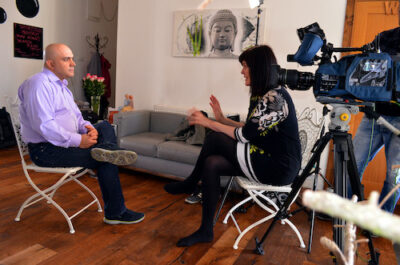
It doesn’t follow that this necessarily slows down the process, although there are some examples. It is true that grief and strong emotional responses affect the soul which is leaving. Therefore, it is good to follow the advice that before a person enters the last stage of dying, their loves ones say goodbye and leave the dying person alone with someone who masters the art of dying and who can lead the dying person peacefully and in silence, without crying and displays of grief and attachment, gradually through the last moments.
Maybe for some people this sounds difficult or politically incorrect. However, the process of dying can be compared with the process of birth – when we are born, those who are with us are usually doctors and nurses who help us reach the world – and it should be similar when we die. However, most dying people have no help, enduring all kinds of possibly confusing situations.
Therefore, I stand up for the experts who should assist souls leaving the body harmoniously, without traumatic experiences. Departure should take place in peace and quiet, without any dramas or soap operas.
Dying people mostly have no help and must deal with confusing situations. The soul should leave the body in peace and quiet, without drama.
Can you briefly describe the stages of the soul’s journey after death?
This is the theme of my workshops. There are certain stages the soul passes through after death, which is inevitable and which can be, if we are prepared, a very beautiful spiritual experience rather than a negative one.
In general I can say that it is a case of bardo, defined as an intermediate time or in between world, which is divided into specific sections in which different things are happening. If you are ready for it, you’re not surprised.
When a bardo period is complete, another period follows, where the soul is freer, but even then it may receive certain guidance and assistance. Support and assistance to souls after death is important, therefore prayers and various rituals that help the souls are present in all religions.
In our workshops we deal with this almost mathematically. When we help the soul we receive its gratitude for the assistance. I experienced this when my father died and also when others close to me died. When you help the soul pass to the other side, usually you get some kind of answer. I don’t want to say what, but it is very clear that your actions are very good and useful for the soul, which is now in a much better place.
What happens to a person who commits suicide? Is the suicide also a murder, therefore creating negative karma?
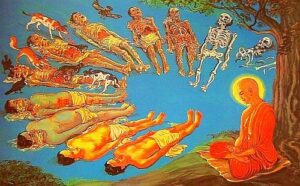
This is a tragic situation and a difficult question. Many relatives, faced with the suicide of their loved one, need emotional support for comfort and believe that the soul of the person who found himself in a bad situation and took his own life deliberately is now in a better place.
However, the knowledge from religion and Tibetan Yoga says that, unfortunately, this is not so. Suicide is regarded as murder, because killing yourself is also murder. When murder is committed, negative karma is generated and, therefore, the process of death is much more difficult. The process is much longer and when it ends – when the soul is reborn and reincarnated again – the soul is usually returned to the same situation. It will have to cope with the same challenges and must not make the same mistake and prematurely end its life.
All traditions remind us that to take life is not good, because no matter how tough the situation is, suicide is not the solution – the universe will put you back in the same place. Thus, you need to solve your crises, so it is better to find a solution in a spiritual sense. I know that is easier to say than do, but it is so.
Liisa Maimon
Founder and Senior Teacher
An inspiring tantric yogini, Liisa is a strong driving force of the school – both as a senior teacher and general manager.

Experience these rare teachings!

The Art of Dying
Life’s greatest passage explained
